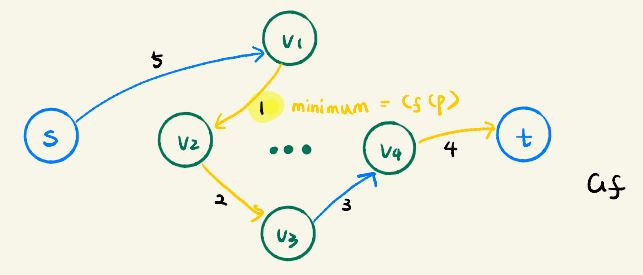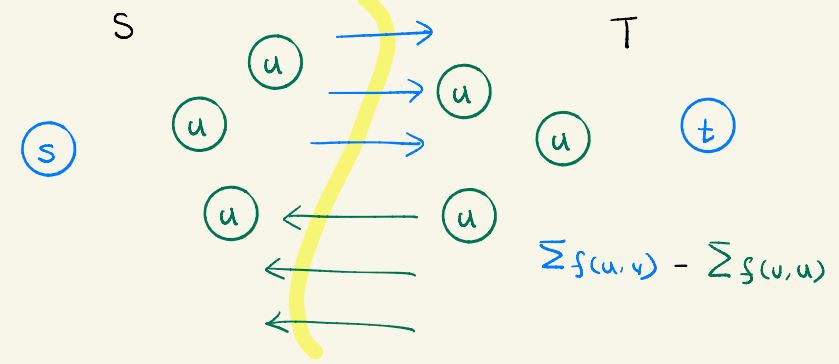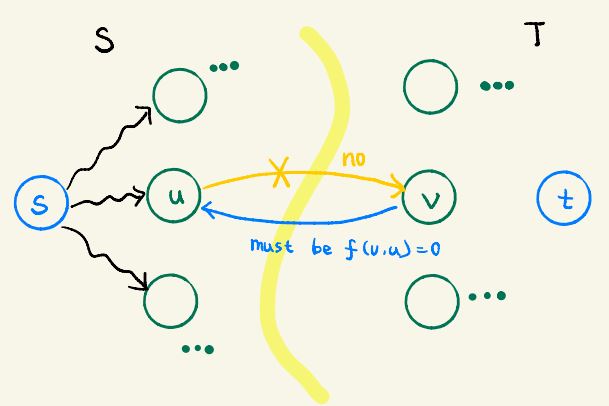- Don't send anything back in a loop - that takes capacity
- If there exist any path that we can fill in more capacity - fill more
Residual Network
Residual Network Introduction: Represent how we can change flow in on the edges of G, notation Gf
How much can we change on the flow?
- Send more on this edge? The possible amount to send more is based on current flow but not exceed current capacity
cf(u,v) = c(u,v) - f(u,v)
- When already sent some flow, what about send less(similar to send the flow back)?
The amount we can send back is same as current flow, in reversed direction.
cf(v,u) = f(u,v)
- Otherwise when there's no edge in G, there's also no change of flow
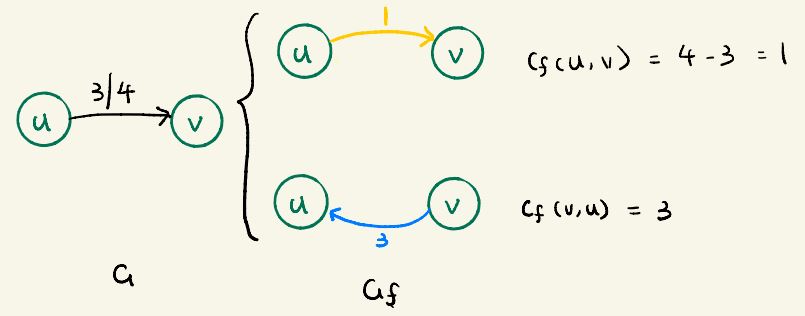
Residual Network definition:
Given a flow network G=(V,E) and a flow f. The residual network of G induced by f is Gf=(V, Ef), where
Ef = { (u,v) ∈ V x V: cf > 0 } (Click to see explaination of each part, refresh if a bad color appears)
The edges in this residual graph are: All possible changes in flow as seen above
Build a residual network here:
SV1: 16 - 11 = 5
SV2: 13 - 8 = 5
V2V1: 4 - 1 = 3
V1V3: 12 - 12 = 0
V3V2: 9 - 4 = 5
V2V4: 14 - 11 = 3
V4V3: 7 - 7 = 0
V3T: 20 - 15 = 5
V4T: 4 - 4 = 0
Reverse each flow.
Remove the 0s
Final network
Augmentation: A flow in residual network Gf is a hint for adding flow in G
If f is a flow in G and f' is a flow in Gf, we define augmentation:
(f ↑ f') = f(u,v) + f'(u,v) - f'(v,u) (Click to see explaination of each part, refresh if a bad color appears)
The amount we already sent in flow f from u to v The amount we send more in f' from u to v The amount we send back in f' from v to u
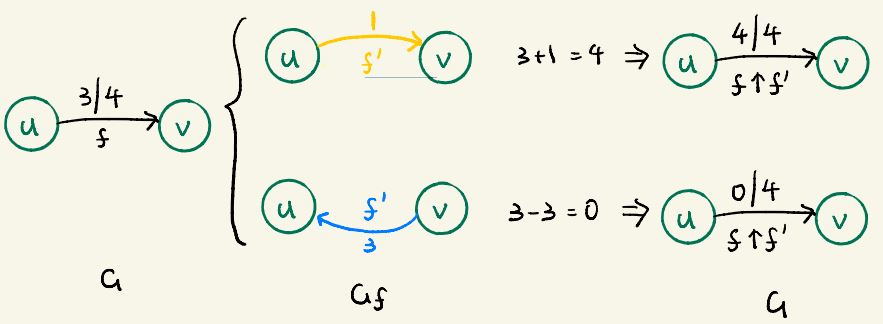
Lemma 26.1 |f ↑ f'| = |f| + |f'|
Augmenting Path: A simple path from s to t in the residual network Gf
Residual Capacity: The maximum amount by which we can increase the flow on each edge in an augmenting path p.
cf(p) = min { cf(u, v): (u, v) is on p } (Click to see explaination of each part, refresh if a bad color appears)
The maximum amount we can increase without violating anything on this path is to incerase it by smallest residual value of all edges All the edges on path
